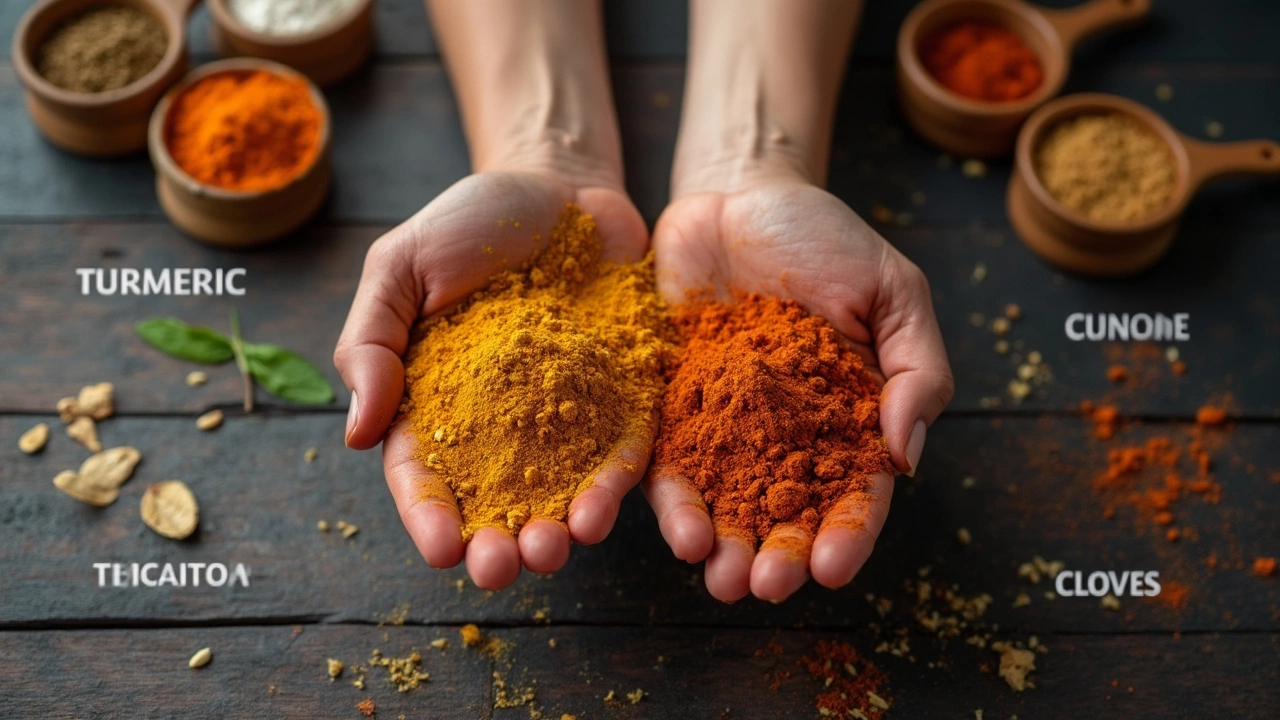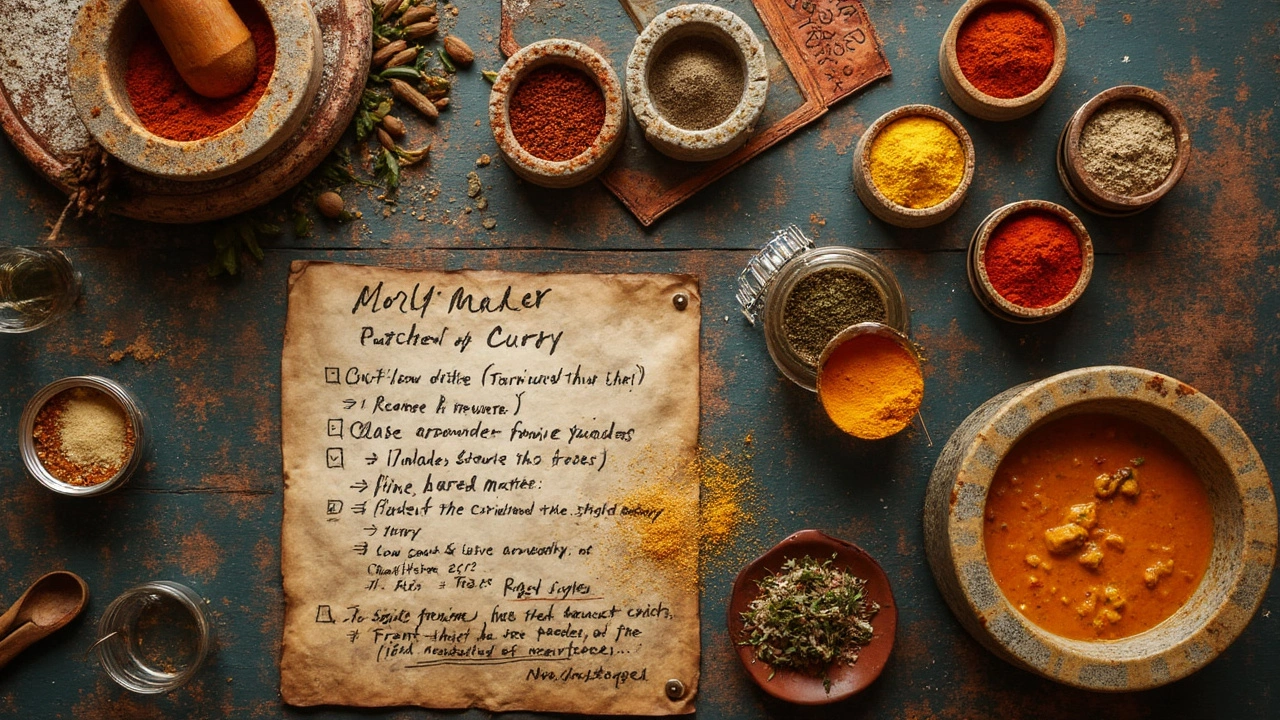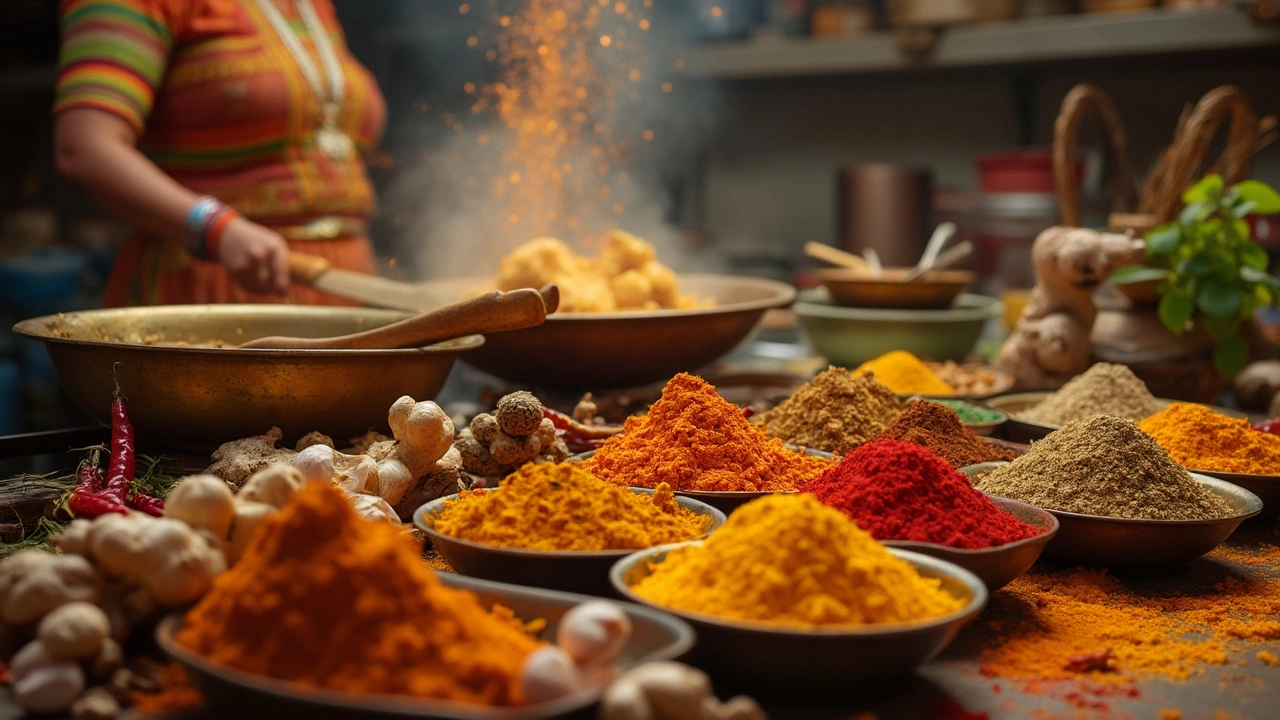Curry powder isn’t some ancient, secret Indian ingredient. It’s actually a spice blend that started in Britain, inspired by the flavors of Indian curries. Weird, right? Yet this golden powder now sits in pantries everywhere, just waiting to turn boring chicken into a craveable curry.
When you open a jar of curry powder, you’ll smell turmeric, coriander, cumin, sometimes chili, and maybe a little fenugreek or mustard seed. It’s the shortcut spice mix for that signature yellow curry flavor. If you see a chicken curry recipe that just says “curry powder,” you’re not alone in wondering what’s inside or if you’re even using the right stuff.
Here’s the thing: Not every curry uses curry powder, but when a recipe calls for it, using the right amount makes all the difference. Too little, and the curry is bland. Too much, and that’s all you’ll taste. The goal is to let the spices blend with your chicken and sauce, not overpower the dish or disappear completely.
- Why Curry Powder Steals the Show
- Inside the Spice Blend: What’s Really in Curry Powder
- Curry Powder vs. Garam Masala: Clearing the Confusion
- Tips for Using Curry Spices Like a Pro
- DIY Curry Powder: Mixing at Home
Why Curry Powder Steals the Show
When people think of a killer chicken curry, the first thing that comes to mind is usually that bold yellow color and the punchy aroma. That’s mostly thanks to curry powder and its magic mix of spices. It steps in as the hero, especially if you’re not the type to stack your kitchen with ten different spice jars.
The reason curry powder is a household staple? It’s ridiculously versatile. With just one scoop, you get layers of flavor that’d take half a dozen individual spices to achieve on their own. This is also why so many home cooks rely on it for weeknight meals—a sprinkle of this, and you’re halfway to a tasty curry. The most important thing here is that curry spice (that’s curry powder for most folks) strikes a great balance: not too hot, not too mild, just right for most palates.
Interesting fact: Curry powder was actually invented by spice merchants in England during the 18th century for British expats who missed Indian-style food. According to data from the UK’s Food Standards Agency, curry powder ranks among the top five selling spice blends in UK supermarkets.
| Country | Average Annual Curry Powder Sales (tons) |
|---|---|
| United Kingdom | 2,800 |
| United States | 2,100 |
| Australia | 950 |
Why does it matter in a chicken curry recipe? Curry powder has the power to bring chicken, onions, tomatoes, and garlic together and tie all the flavors into one mouthwatering sauce. It’s not just about heat—good curry powder adds a hint of sweetness, some earthy notes, and that classic deep yellow or orange color. If you want a shortcut to crowd-pleasing chicken curry, it’s honestly your best bet.
Inside the Spice Blend: What’s Really in Curry Powder
The funny thing about curry powder is that there isn’t just one recipe. Every brand, and even every home cook, has their own version. But there are a few spices that show up almost every time. If you check the label on a supermarket jar, you’ll probably spot these mainstays:
- Curry spice: Turmeric – gives curry powder its classic yellow color and earthy taste.
- Coriander – brings a lemony, nutty touch.
- Cumin – adds warmth and a kick of smokiness.
- Fenugreek – a bit nutty and a little sweet, it’s like a hidden flavor.
- Mustard seeds – for a gentle bite (sometimes).
- Black pepper – for a sharp nudge of heat.
- Ginger and chili powder – for more warmth and zing, depending on the blend.
Some mixes are fiery, others are super mild. In the UK and US, most supermarket curry powders aim for the middle—not too hot, not too bland. Indian kitchens rarely use "curry powder" as one blend; instead, cooks add each spice at different times so flavors build in layers.
Here’s a peek at what’s usually hiding in your store-bought jar:
| Common Ingredient | Typical Amount (%) |
|---|---|
| Turmeric | 20-30 |
| Coriander | 15-25 |
| Cumin | 10-15 |
| Fenugreek | 5-10 |
| Mustard Seed | 5-8 |
| Chili Powder | 3-7 |
| Black Pepper | 2-5 |
| Ginger | 2-5 |
The real fun starts when you swap in extra cumin for smokiness or add more chili for those who can handle the heat. If you ever find your curry powder tasting a little flat, try toasting it in a dry pan for a minute. That simple step can wake up the oils in the spices and make your chicken curry sing.

Curry Powder vs. Garam Masala: Clearing the Confusion
It’s easy to think curry powder and garam masala are the same thing, but they’re not. A lot of people new to Indian cooking grab whichever jar is closest, but the flavor results can be totally different. Here’s what actually sets them apart.
Curry powder is usually bright yellow thanks to turmeric. It’s got a mild, earthy flavor with a little kick from chili powder or black pepper. Garam masala, on the other hand, is deeper and a bit sweeter, usually brown, and often added at the very end of cooking for a flavor boost.
Check out the main differences in this quick table:
| Spice Blend | Common Ingredients | When to Add | Main Taste |
|---|---|---|---|
| Curry Powder | Turmeric, coriander, cumin, chili, fenugreek | Start of cooking | Earthy, warm, sometimes spicy |
| Garam Masala | Coriander, cumin, cardamom, cinnamon, cloves, black pepper | End of cooking | Bold, warm, slightly sweet |
If you swap them, the end result can taste nothing like the original recipe. Garam masala won’t give you that strong yellow color, and curry powder lacks the depth of garam masala. Indian chef Madhur Jaffrey once said,
“Curry powder is a British invention, but garam masala is a true Indian blend—every family has their own.”
Next time you’re reaching for a spice jar, remember what’s in your hand. For that classic curry spice chicken, you want the yellow curry powder. Save garam masala for later in the recipe, or add both if you want a more layered flavor.
- Curry powder is a starting point—use it early to infuse everything.
- Garam masala is best at the end, to finish a dish with a punch of aroma.
- Neither is "hot" unless chili powder is a big part of the mix, so taste as you go.
Tips for Using Curry Spices Like a Pro
Spices can make or break your chicken curry. It’s not just about dumping in a heap of curry powder and hoping for the best. If you want your curry to taste like something you’d order at a great Indian restaurant, a few simple tricks make a big difference.
- Curry spice needs time to develop its flavor. Add your powder early in the cooking process so the spices have a chance to toast and release their oils. This makes the curry taste richer and less like raw spice.
- Don’t be shy about layering. Try sautéing onions, garlic, and ginger before adding your spices. These give the spice mix a flavor boost and create a nice base for your sauce.
- Spices burn easily if the pan is too hot or dry. Add a splash of oil or water to keep things smooth. Burnt spice tastes bitter and there’s no fixing it once it happens.
- Freshness matters. Buy smaller amounts of spice and keep them in airtight containers away from sunlight. Old curry powder loses its punch; fresher is always better.
- Salt brings out flavor. Taste your curry near the end of cooking — sometimes a pinch of salt makes the spice blend come alive.
- If your curry tastes flat, a squeeze of lemon or a spoon of yogurt at the end can make all the flavors pop. This trick is used by a lot of home cooks and chefs.
Food writer Madhur Jaffrey, known as the ‘queen of curries’, puts it perfectly:
"A good curry is about balance and knowing when to give spices time to bloom. Skipping that step is the biggest mistake I see at home."
Don’t be afraid to taste and adjust as you go. Spice blends are not set in stone— tweak them to what you like. If you can, grab a bunch of different curry powders and see which brand or recipe you enjoy the most. You might be surprised how much variety is out there.

DIY Curry Powder: Mixing at Home
Ever wonder what’s actually in curry powder? You don’t need to keep guessing. You can make your own blend right in your kitchen, and tweak it until it’s perfect for your taste. Most store-bought curry powders use a core set of spices: turmeric, coriander, cumin, fenugreek, chili powder, and sometimes mustard or black pepper for a bit more kick.
The best part? You control the heat, the color, and the intensity. No more bland, wonky store-bought spice mixes that all taste the same. Here’s a super simple curry powder recipe that works great for any curry spice craving, especially in chicken curry.
- 2 tablespoons ground coriander
- 2 tablespoons ground cumin
- 1 tablespoon ground turmeric
- 1 teaspoon ground ginger
- 1 teaspoon mustard powder (optional)
- 1 teaspoon chili powder (adjust to taste)
- 1 teaspoon black pepper
- ½ teaspoon ground fenugreek (if you can find it)
Mix all these in a bowl and store in an airtight container. Homemade blends stay fresher for one or two months if you keep them away from direct sunlight or heat. Want a fresh zing every time? Toast the whole seeds (coriander, cumin, mustard, fenugreek) in a dry pan, then grind them for even more flavor.
Check out this quick table that shows the average spice content in common curry powders from big brands (sampled in a 2024 review):
| Brand | Turmeric | Coriander | Cumin | Chili | Fenugreek |
|---|---|---|---|---|---|
| MDH | 25% | 30% | 18% | 8% | 5% |
| Everest | 22% | 32% | 15% | 10% | 6% |
| S&B Golden Curry | 20% | 25% | 15% | 14% | 4% |
This mix isn’t set in stone. Want it spicy? Double the chili powder. Missing fenugreek? Don’t stress, just skip it. No kitchen police will show up if you go off-recipe. That’s the cool thing about blending your own: it’s about what tastes good to you.
One big tip: always start with less. You can add more, but you can’t tone down an overpowering batch. And label the jar—curry powder can look a lot like cumin or turmeric when you’re half-awake and cooking breakfast!
